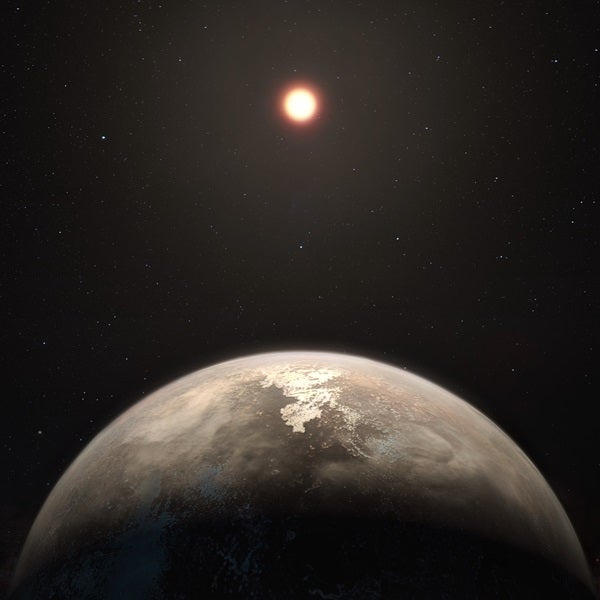Just 11 light-years away, a sleepy red dwarf star named Ross 128 has at least one planet orbiting it. Ross-128b is roughly the size of Earth, and a little more massive. Despite a year that lasts a hair under 10 days, it may also be the nearest place to find life near Earth.
Only one confirmed exoplanet is closer to us, Proxima Centauri b (also called Prox b). But Proxima Centauri, despite its similar size and mass to Ross 128, has one key difference: it’s an active star, continuously cooking its known planetary system with scorching radiation that may have blasted away any chance of Prox b having an atmosphere, and hence, life.
But Ross 128 is an older star, and significantly more quiet. In fact, stellar activity there is fairly rare compared to other M-dwarfs. There are a lot of “ifs,” but if Ross 128b has an atmosphere, it may not have trouble holding onto it, unlike Prox b. And if that atmosphere has a greenhouse effect, it could heat the planet up to around 70 degrees Fahrenheit (21 degrees Celsius.) One caveat: Ross 128b is likely tidally locked to its parent star, and scientists aren’t sure how this affects habitability as one side is always facing the star and one side is always facing away.
The planet was discovered by the High Accuracy Radial velocity Planet Searcher (HARPS) instrument at the European Southern Observatory after several years of measurements.
As Jason Davis at the Planetary Society points out, there’s something else interesting about Ross 128 as well. The Breakthrough Listen program, the most robust Search for Extraterrestrial Intelligence (SETI) campaign of all time, found some strange rumblings from the direction of Ross 128. While the signal has since been ruled out as likely interference from Earth-orbiting satellites, this discovery gives SETI researchers a chance to look again and eavesdrop in.
So welcome our new neighbor, Ross 128b. And wave “hi” to it in 79,000 years, when it will become the closest planetary system to Earth, thanks to the motions of our Sun and neighboring stars as they orbit the center of the Milky Way.
You know, if humanity isn’t dead by then.










